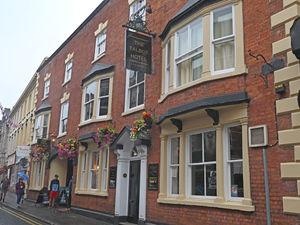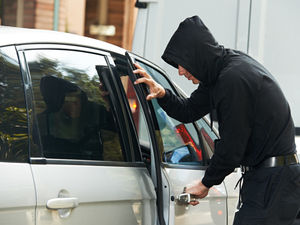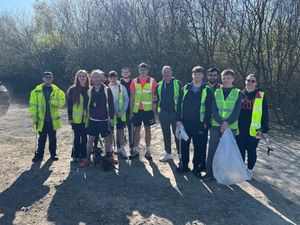Smiles all around as Black Country Living Museum reopens
There were smiles all around as the Black Country Living Museum welcomed back visitors after six months of closure due to the coronavirus pandemic.

A steady stream of customers lapped up the warm and vibrant atmosphere provided by the old buildings and engaging live actors.
Those who attended said they were glad to return to some form of normality following months of lockdown and isolation.
People had flocked from far and wide across the country to visit the popular museum - which has been the film set of Peaky Blinders - on Monday.
Among them was Amanda Worley, aged 60, from Redditch, who attended with friends. She said: "I'm really excited to be here.
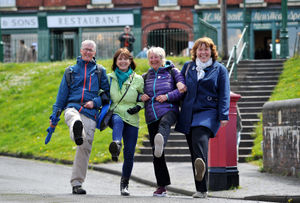
"It is a relief getting back to some form of normality and enjoying the fact we can go into shops, alongside meeting friends who I haven't seen for six months."
Also attending were Liz Harris, 53, and Liz Bevan, 60, who are both from West Bromwich.
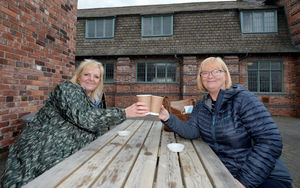
Ms Bevan said: "I like the 1940s and the Peaky Blinders, it is nice to come here. "
Mr Harris said: "I feel really safe here."
Jackie Leek, 69 from Stroud, visited the museum for the first time on Monday.
She said: "I always wanted to come here. When I saw it was open, I thought today would be good, maybe it would be quieter with the weather not being so good."
Gina, 51 from Stourbridge, who attended with Tony Sibley, 53, said: "It is about time we have been able to go out. It has been a bad year."
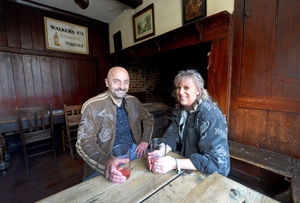
Stephanie Radbourne, 64, from Dagenham, who attended with Stephen Radbourne, 66, said: "It is our second trip here and I think it has been better than last time.
"It is nice to get out and about. You feel about more human again having been locked up for so long."

In a bid to cater for social-distancing measures, the museum has brought its actors onto the streets where they interact with each other and visitors passing by.
On a typical busy day, in life before coronavirus, the museum could expect up to 2,500 visitors.
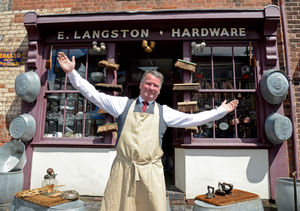
But now there is a cap on how many people can attend each day, with that limit set to 1,300. The museum is running at about one third of capacity.
In total, 700 people attended on Monday, including two school trips, but the museum is gearing up for a sell-out weekend.
Natasha Eden, chief operating officer, said: "It has been a huge piece of team work to have visitors back again.
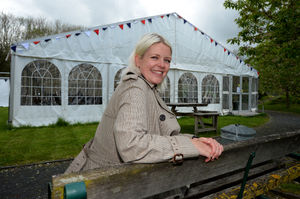
"Being a Monday in May, without it being the school holidays, we wouldn't expect to see hundreds and hundreds of visitors on site.
"That is good for all of us to have a bit of a slower start and get used to it again.
"But also it is nice for visitors to be able to come back and feel they are somewhere safe, with lots of space, while they are getting used to that again.
"At the moment, it looks like we are going to sell out for the weekend and certainly half term, so fingers crossed the weather is good.".
She added: "You will see more of the historic characters out and about on the streets and things like that.
"What is really nice about that is people who don't want to go into small spaces can engage with the characters out on the streets.
"Actually, we all quite like an atmosphere after all these quiet streets we walked around, so I think people are enjoying that."
One of the live actors is Dave Holloway who plays an air raid patrol warden.
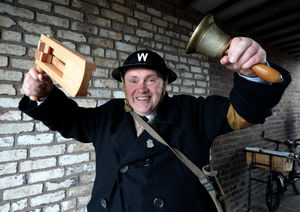
He said: "We have had about 15 months off. It is great to be back, we did about three months in that period."
Matthew Hawkins, who plays a school teacher, added: "It is great to be back. You have had to refresh yourself on the historic, names and places.
"It is a long time since we have had to speak about those issues. Being an open air museum, fortunately we are not as constrained as other museums. You have to be more conscious in that regards."

The museum closed its doors on December 21, meaning it has not been in operation for 147 days until reopening today.
There has been new additions to the complex, including a marquee which plays host to a 1950s fair, as part of the Festival of Britain.
Work is also ongoing on new areas of the attraction, including a 1940s to 60s village and an industrial area.



